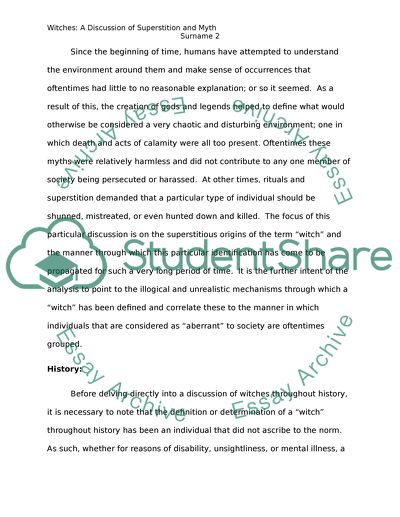Cite this document
(“Witches - A Discussion of Superstition and Myth Research Paper”, n.d.)
Retrieved from https://studentshare.org/social-science/1648955-witches
Retrieved from https://studentshare.org/social-science/1648955-witches
(Witches - A Discussion of Superstition and Myth Research Paper)
https://studentshare.org/social-science/1648955-witches.
https://studentshare.org/social-science/1648955-witches.
“Witches - A Discussion of Superstition and Myth Research Paper”, n.d. https://studentshare.org/social-science/1648955-witches.


